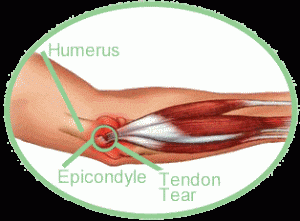In part three, I discussed ‘stress fractures’. In this post, I will be discussing ‘tendonitis’ and tissue healing times.
Tendonitis
 Tendonitis is inflammation of a tendon. Tendonitis can occur with repeated stretching and overloading, the cross-linking structure of the collagen fibres break apart, causing micro tears. These may be caused by tight muscles causing rubbing against a bone, ligament or retinaculum, external rubbing (e.g. from a shoe), torsion and shear forces.
Tendonitis is inflammation of a tendon. Tendonitis can occur with repeated stretching and overloading, the cross-linking structure of the collagen fibres break apart, causing micro tears. These may be caused by tight muscles causing rubbing against a bone, ligament or retinaculum, external rubbing (e.g. from a shoe), torsion and shear forces.
Due to the lack blood supply of tendons, they are slow to heal. Signs and symptoms of tendonitis include pain, tenderness, reduced strength, they are usually close to a joint, aggravated by activity as their lack of venous return can cause a long inflammatory period and build up of nociceptive substances.
Pain can often ease during activity and worse after a period of rest. Tenosynovitis, also known as tenovaginitis or paratendonitis is the inflammation of the sheath that surrounds some tendons. Signs of tenosynovitis are crepitus on movement, thickening of the tendon and fibrous adhesions inside the sheath. Common areas of tenosynovitis are the wrist and ankle.
Tissue Healing Times:
As a general rule, with the correct rehabilitation protocols, the following healing times are expected for each classification of injury.
| StrainGrade 1 | StrainGrade 2 | StrainGrade 3 |
| Days | 3-6 weeks | 2-3+months |
| SprainGrade 1 | SprainGrade 2 | SprainGrade 3 |
| 2-3 weeks | 3-6 weeks | 3-4+months |
| Fractures | Overuse Injuries | |
| 3-20 weeks | 6 weeks – 6 months |
For more information on injuries, you can check out my book, “Anatomy of Sports Injuries: For Fitness and Rehabilitation“.
